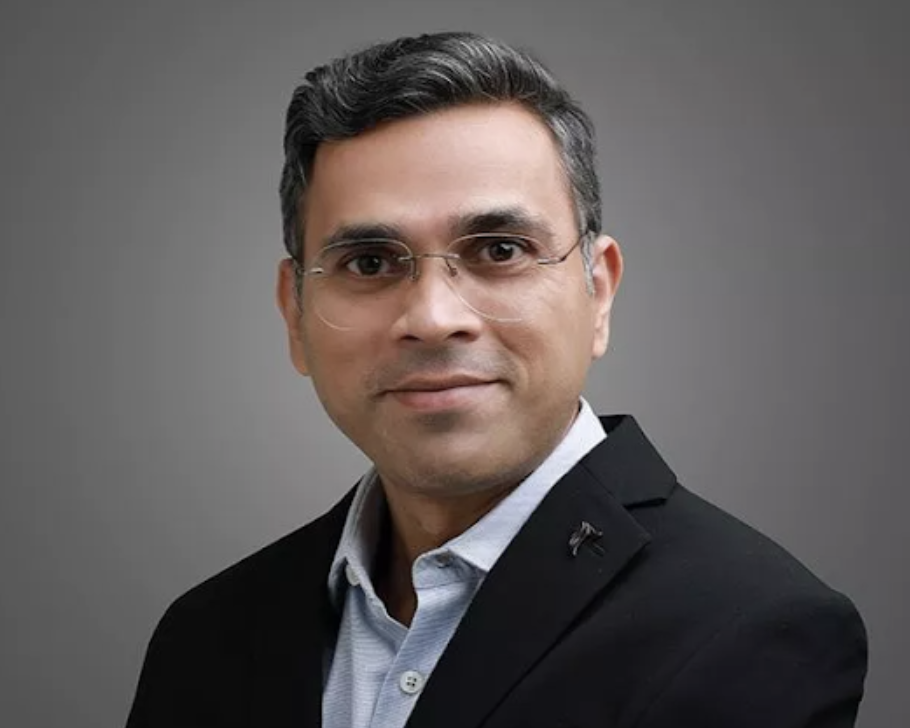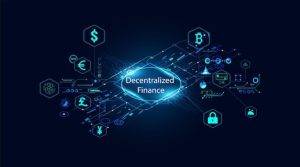The Role of Secure Development Lifecycles in DeFi Projects

The Role of Secure Development Lifecycles in DeFi Projects
Decentralized Finance (DeFi) has emerged as a groundbreaking innovation in the world of finance, offering decentralized alternatives to traditional financial systems. However, with the growth and popularity of DeFi, security concerns have become increasingly prevalent. The integration of secure development lifecycles (SDL) plays a vital role in mitigating these risks and ensuring the safety of DeFi projects.
Understanding DeFi Projects
DeFi projects are built on blockchain technology, enabling the creation of decentralized financial applications and services. These platforms facilitate peer-to-peer transactions without intermediaries, providing users with greater control over their finances. DeFi encompasses various areas such as lending, borrowing, decentralized exchanges, stablecoins, and yield farming.
The Importance of Security in DeFi
As DeFi projects handle sensitive financial transactions and manage significant amounts of user funds, security is of paramount importance. The decentralized nature of DeFi makes it an attractive target for malicious actors seeking to exploit vulnerabilities for financial gain. Without robust security measures, users’ assets and data are at risk of theft, manipulation, and other cyber threats.
Security plays a paramount role in the world of Decentralized Finance (DeFi). As DeFi projects continue to revolutionize traditional financial systems, ensuring the safety and protection of users’ funds and data has become of utmost importance. With the decentralized nature of DeFi, where transactions occur directly between participants without intermediaries, robust security measures are essential to safeguard against potential risks and malicious activities.
In the realm of DeFi, users entrust their assets, ranging from cryptocurrencies to digital assets, to decentralized platforms for various financial activities such as lending, borrowing, yield farming, and decentralized exchanges. This reliance on DeFi platforms emphasizes the need for stringent security practices to protect the integrity of transactions and prevent unauthorized access or theft.
The decentralized nature of DeFi also presents unique challenges. Unlike centralized financial institutions, DeFi lacks a central authority that can oversee and enforce security measures. Instead, the responsibility falls on the developers, auditors, and the wider community to ensure that DeFi protocols and smart contracts are robust and free from vulnerabilities.
Furthermore, the significant rise in the value locked in DeFi projects has attracted the attention of cybercriminals who seek to exploit weaknesses in the system. The decentralized nature and the potential for financial gains make DeFi an attractive target. Without proper security measures in place, DeFi projects risk losing user funds, facing reputational damage, and hindering the growth and adoption of the entire ecosystem.
To address these concerns, DeFi projects must prioritize security throughout the entire development process. This includes implementing secure development lifecycles, conducting thorough code audits, engaging independent security experts for assessments, and fostering a security-first mindset among developers and stakeholders.
Security is of utmost importance in DeFi. The decentralized nature of these projects and the significant value at stake necessitate robust security measures to protect user funds and data. By prioritizing security and implementing best practices, DeFi projects can establish trust, attract a wider user base, and contribute to the long-term sustainability of the DeFi ecosystem.
Secure Development Lifecycles (SDL)
Definition and Purpose
Secure Development Lifecycles (SDL) are comprehensive frameworks that guide the development of secure software and applications. In the context of DeFi projects, SDL provides a systematic approach to identify, mitigate, and prevent security risks throughout the software development process.
Phases of a Secure Development Lifecycle
A typical SDL consists of several phases, including:
- Requirements and Design: Clearly define security requirements and incorporate security considerations into the system architecture and design.
- Secure Coding: Develop code following secure coding practices, ensuring proper input validation, output encoding, and error handling.
- Testing: Conduct rigorous testing to identify vulnerabilities, including unit testing, integration testing, and penetration testing.
- Deployment: Implement secure deployment practices, such as secure configuration, patch management, and access controls.
- Monitoring and Maintenance: Continuously monitor the system for potential security issues and apply timely patches and updates.
Best Practices for Implementing SDL in DeFi Projects
When implementing SDL in DeFi projects, the following best practices should be considered:
- Threat Modeling: Identify potential threats and vulnerabilities specific to DeFi applications.
- Code Review: Conduct regular code reviews to identify and rectify security weaknesses.
- Security Training: Provide security training to developers and stakeholders to foster a security-first mindset.
- Third-Party Audits: Engage independent security auditors to assess the robustness of the system and identify any vulnerabilities.

Benefits of Implementing Secure Development Lifecycles
- Enhanced Security: SDL ensures that security is considered at every stage of the development process, reducing the likelihood of vulnerabilities and potential breaches.
- Risk Mitigation: By proactively identifying and rectifying security flaws, SDL helps mitigate the risk of financial loss, reputational damage, and legal liabilities for DeFi projects.
- Compliance: SDL assists DeFi projects in aligning with regulatory requirements and industry best practices, ensuring adherence to security standards and frameworks.
- User Trust: Implementing robust security measures inspires user confidence and trust in DeFi platforms. Users are more likely to participate and transact on platforms that prioritize security, leading to increased adoption and user engagement.
- Long-Term Sustainability: SDL contributes to the long-term sustainability of DeFi projects by reducing the frequency and impact of security incidents. This helps protect the project’s reputation, maintain user satisfaction, and foster continued growth and development.
- Efficient Resource Allocation: SDL allows for the efficient allocation of resources by identifying and addressing security issues early in the development process. This helps prevent costly security incidents that may require significant resources to resolve.
- Competitive Advantage: Implementing SDL can provide DeFi projects with a competitive advantage. Projects with robust security measures in place are more likely to attract users and investors who prioritize security and trust.
- Industry Reputation: DeFi projects that prioritize security through SDL contribute to building a positive industry reputation. This benefits not only the project itself but also the wider DeFi ecosystem by promoting trust and reliability.
By embracing SDL, DeFi projects can enjoy these benefits, ensuring the safety and integrity of their platforms while fostering a secure environment for users to engage in decentralized financial activities.
Challenges and Considerations
- Evolving Threat Landscape: DeFi projects must stay ahead of the ever-evolving threat landscape. New vulnerabilities and attack vectors constantly emerge, requiring ongoing updates and adaptations to SDL practices.
- Resource Constraints: Small or early-stage DeFi projects may face resource constraints, including limited budgets, expertise, and time. Implementing SDL may require additional investments in security infrastructure, personnel, and audits.
- Interoperability Complexities: DeFi projects often integrate multiple protocols and technologies, introducing interoperability complexities. SDL planning must account for the potential security risks that arise from connecting different systems and ensuring their compatibility.
- Third-Party Dependencies: DeFi projects may rely on third-party services and dependencies. Integrating external code and solutions can introduce potential vulnerabilities, requiring careful evaluation and monitoring throughout the SDL process.
- Regulatory Compliance: Compliance with regulatory requirements poses a challenge for DeFi projects. SDL should consider relevant regulations and standards to ensure compliance without compromising security measures.
- User Experience: Striking a balance between robust security and user experience can be challenging. Implementing strong security measures should not overly burden users or hinder the platform’s usability, as it may discourage adoption and engagement.
- Community Governance: DeFi projects often operate under decentralized governance models. Coordinating security efforts, aligning priorities, and fostering community participation in SDL can be challenging due to diverse opinions and decision-making processes.
- Security Education: Promoting a security-first mindset among developers, auditors, and users is crucial. Providing adequate security education and awareness programs can be challenging but is essential to ensure the successful implementation of SDL.
By acknowledging these challenges and considerations, DeFi projects can proactively address them within their SDL strategies. Overcoming these hurdles contributes to the establishment of robust security measures and reinforces the overall integrity of the DeFi ecosystem.
Examples of Successful SDL Implementation in DeFi
Several DeFi projects have successfully implemented SDL to enhance their security posture. For example, [Project A] integrated thorough code audits and engaged external security experts to identify and address vulnerabilities. [Project B] established a bug bounty program, incentivizing the community to discover and report security issues.
The Future of Secure Development Lifecycles in DeFi
As the DeFi ecosystem continues to expand, the role of SDL will become increasingly crucial. The integration of SDL will evolve to address emerging threats, provide standardized security practices, and ensure the long-term sustainability of DeFi projects.
Conclusion
Security is a paramount concern in DeFi projects, given the significant financial implications and the potential impact on users’ trust. Implementing secure development lifecycles offers a structured approach to enhance the security of DeFi projects, mitigating vulnerabilities, and ensuring the integrity of financial transactions.
FAQs
- What is DeFi? DeFi refers to decentralized finance, which encompasses financial applications built on blockchain technology, allowing for peer-to-peer transactions without intermediaries.
- Why is security important in DeFi projects? Security is vital in DeFi projects as they handle sensitive financial transactions and manage significant amounts of user funds, making them attractive targets for malicious actors.
- How does a Secure Development Lifecycle contribute to the security of DeFi projects? A Secure Development Lifecycle provides a systematic approach to identify, mitigate, and prevent security risks throughout the software development process, ensuring robust security measures are implemented.
- What are some challenges faced in implementing Secure Development Lifecycles in DeFi? Challenges include an evolving threat landscape, resource constraints, and interoperability complexities arising from integrating different DeFi protocols.
- Can existing DeFi projects incorporate SDL? Yes, existing DeFi projects can adopt SDL by conducting code audits, engaging third-party auditors, and implementing security best practices to enhance their security posture.

I’m known as one of the best crypto authors because I take time to understand the technology and write in a way that is easy for others to understand. I can simplify complex concepts and my writing style is engaging. My articles have been featured on some of the top crypto sites and I’mregularly sought out by readers for my insights on the latest news. I’m also a speaker and have discussed crypto at various conferences. If you’re looking for someone who can help you make sense of the ever-changing world of cryptocurrency, then you can get in touch with me.



